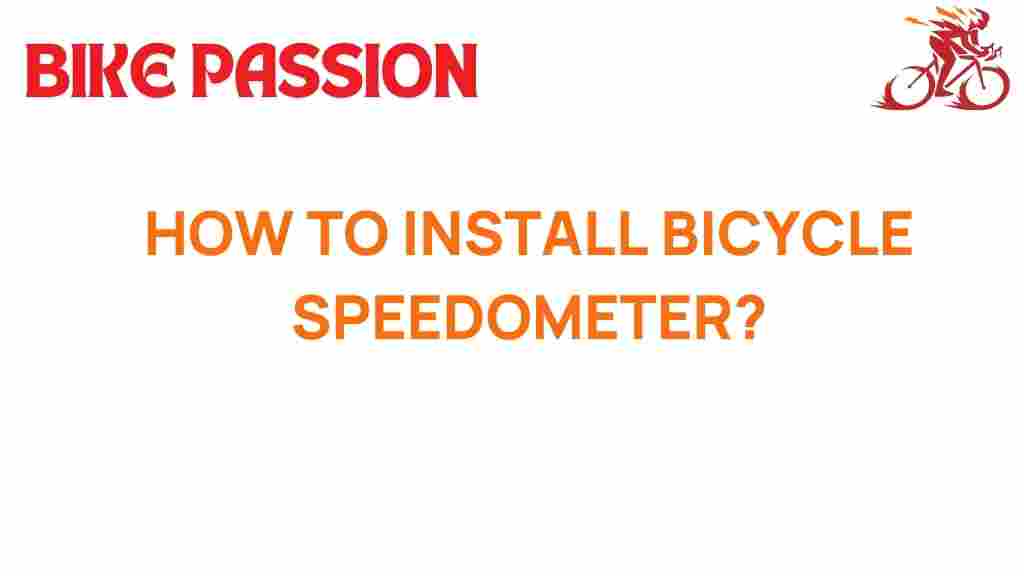Speedometer Installation: Your Guide to Enhanced Cycling Performance
When it comes to cycling, knowing your speed and distance is crucial for tracking performance and improving your skills. One of the essential bicycle accessories you can invest in is a speedometer. Not only does it provide valuable data, but it also enhances your overall cycling experience. In this guide, we will take you through the step-by-step process of speedometer installation, along with tips on bike maintenance and cycling technology to help you get the most out of your ride.
Why Install a Speedometer?
A speedometer is more than just a gadget; it’s a powerful tool that helps cyclists monitor their performance. Here are a few reasons why you should consider installing one:
- Track Your Speed: Understand how fast you’re going and set personal bests.
- Monitor Distance: Keep track of how far you’ve traveled on your rides.
- Enhance Performance: Use the data to analyze your rides and improve your cycling efficiency.
- Stay Motivated: Seeing your progress can keep you motivated to ride more often.
Choosing the Right Speedometer
Before diving into the installation process, it’s essential to select the right speedometer for your cycling needs. Here are some factors to consider:
- Wired vs. Wireless: Wired models are often reliable but may require more effort to install. Wireless models offer convenience but may need battery changes.
- Features: Look for features such as odometer, average speed, maximum speed, and heart rate monitoring.
- Compatibility: Ensure the speedometer is compatible with your bicycle type.
Speedometer Installation: Step-by-Step Guide
Now that you’ve selected the perfect speedometer, it’s time for the installation process. Follow these steps to ensure a successful setup:
Tools You Will Need
- Speedometer kit
- Screwdriver (if needed)
- Zip ties or double-sided tape
- Measuring tape
- Scissors
Step 1: Prepare Your Bicycle
Before starting the installation, make sure your bicycle is clean and free of any debris. This will help you see where to mount the speedometer and its components clearly.
Step 2: Mount the Speedometer Display
Choose a location on your handlebars that is visible and easy to access while riding. If your speedometer comes with a bracket:
- Attach the bracket using the provided screws or zip ties.
- Adjust the angle for optimal visibility.
Step 3: Attach the Sensor
The sensor is typically mounted on the front fork or the rear wheel. Follow these steps:
- Locate the spoke or magnet that comes with the speedometer.
- Attach the sensor to your fork using zip ties or double-sided tape.
- Position the magnet on a spoke so that it aligns with the sensor when the wheel rotates.
Step 4: Connect the Wires (If Applicable)
If you opted for a wired speedometer, connect the wires securely, ensuring they are not in the way of moving parts. Use zip ties to keep them neat and tidy.
Step 5: Calibrate Your Speedometer
Calibration is crucial for accurate readings. Refer to the manufacturer’s instructions to set the correct wheel circumference. You may need to measure your wheel’s diameter and convert it to circumference using the formula:
C = π × D
Where C is circumference and D is diameter. Input this value into your speedometer settings.
Step 6: Test the Installation
Once everything is installed, take your bike for a test ride. Monitor the speedometer to ensure it functions correctly. If the readings seem off, check the alignment of the sensor and magnet.
Troubleshooting Tips
If you encounter any issues during or after installation, here are some troubleshooting tips:
- No readings: Ensure the sensor is properly aligned with the magnet, and all connections are secure.
- Inaccurate speed: Recheck the wheel circumference settings and recalibrate if necessary.
- Intermittent signal: Move the sensor closer to the magnet or check for obstructions.
Maintaining Your Speedometer and Bicycle
After installing your speedometer, it’s essential to maintain it, along with your bicycle, to ensure peak performance. Here are some DIY bicycle tips for effective bike maintenance:
- Regular Cleaning: Keep your bike clean to prevent rust and degradation of components.
- Check Tire Pressure: Ensure your tires are adequately inflated for better speed and performance.
- Inspect Brakes: Regularly check your brake pads and cables for wear and tear.
- Lubricate Moving Parts: Use appropriate lubricants on chains and gears to ensure smooth operation.
Invest in Quality Cycling Gear
In addition to your speedometer, consider investing in quality cycling gear, such as:
- Helmets: Safety should always come first.
- Gloves: For better grip and comfort during rides.
- Clothing: Moisture-wicking and breathable materials enhance comfort on longer rides.
Staying Up-to-Date with Cycling Technology
As cycling technology advances, keeping up with the latest trends can enhance your riding experience. Consider exploring:
- Smart Speedometers: Devices that sync with your smartphone for data analysis.
- GPS Cycling Computers: For advanced tracking and navigation features.
- Heart Rate Monitors: To keep track of your fitness levels during rides.
Conclusion
Installing a speedometer on your bicycle is a straightforward process that can significantly enhance your cycling experience. By following this step-by-step guide, you can unlock valuable data that helps you track your speed and distance, ultimately improving your overall performance. Remember to maintain both your speedometer and your bike regularly, and consider investing in quality cycling gear and technology to elevate your rides.
For more information on bicycle accessories and gear, check this resource to stay informed about the latest cycling trends and tips!
This article is in the category Gear and created by BikePassion Team
